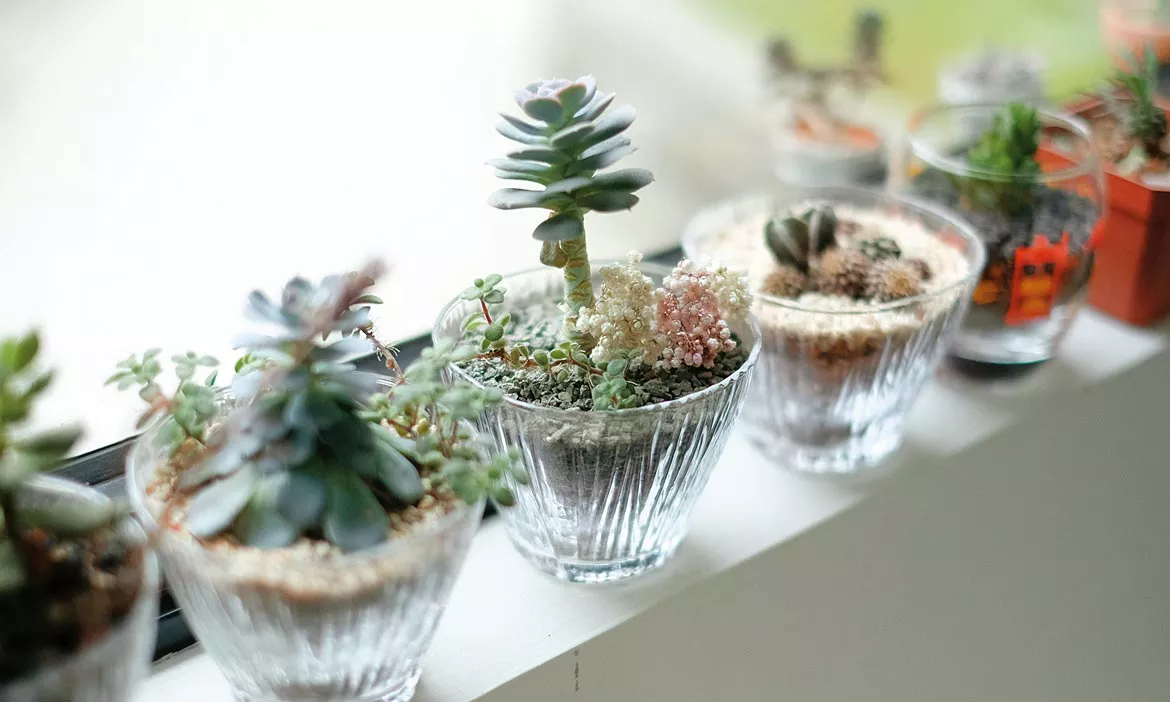Succulents have captured the hearts of plant enthusiasts worldwide due to their unique beauty and resilience. These hardy plants are known for their ability to store water in their fleshy leaves, making them perfect choices for both novice and experienced gardeners. One intriguing aspect of succulents is the way their leaves can propagate new plants, which often leads to the question: what should you do with succulent leaves that fall off?
Understanding Succulent Leaves
Succulent leaves are vital for the plant’s survival. They store water, allowing succulents to thrive in arid conditions and challenging environments. These unique characteristics also provide an opportunity for gardeners to create new plants from detached leaves. Succulent leaves typically come in a variety of shapes, sizes, and colors, depending on the specific succulent species. Whether you are dealing with echeverias, sedums, or other popular succulents, the propagation process remains quite similar.
Collecting Fallen Succulent Leaves
Before delving into propagation methods, it’s important to know how to collect succulent leaves properly. When a succulent leaf falls off naturally or is intentionally removed, make sure it is healthy, plump, and free from any damage or disease. Healthy leaves have the best chances of successfully propagating new succulents.
Propagation Methods
Leaf Propagation
Leaf propagation is the most common method for starting new succulent plants. It works for a wide range of succulent species, such as echeverias, jade plants, and many others.
a. Leaf Placements: Lay the healthy succulent leaves on a dry surface, allowing the wound (the point where the leaf was attached to the stem) to callus over. This usually takes a few days. The callused edge is essential for preventing rot during the propagation process.
b. Planting: Once the leaf is callused, place it on top of well-draining soil, either in a pot or directly in the garden. The use of a succulent-specific potting mix is recommended. Position the leaf with the callused end touching the soil.
c. Watering: Water the soil sparingly, keeping it slightly moist but not soggy. Mist the leaf occasionally to provide humidity. Succulent leaves prefer indirect light during this stage, avoiding direct sun exposure.
d. Growth: Over time, roots will develop from the callused end of the leaf, followed by the growth of a tiny succulent rosette. The original leaf will gradually wither away as the new plant establishes itself.
e. Transplanting: Once the new succulent is big enough to handle, typically a few months after propagation, it can be transplanted into its own pot or a suitable outdoor location.
Stem Cuttings
Stem cuttings are another popular method for propagating succulents. This method works well for tall, branching succulents like Crassula and Aloe.
a. Cutting: Use a clean, sharp knife or scissors to cut a healthy stem from the parent plant. Allow the cut end to dry for a few days to prevent rot.
b. Planting: Place the dried stem cutting in well-draining soil. The depth should be sufficient to keep the cutting upright. Water sparingly, just enough to keep the soil moist.
c. Growth: Roots will develop from the cut end, followed by the emergence of new growth. The new plant will eventually become self-sustaining.
Offsets or Pups
Many succulent species produce offsets or pups, which are small, genetically identical plants that grow at the base of the parent plant. These can be separated and potted to grow into new individual plants.
a. Separation: Gently remove the offsets from the parent plant when they have reached a reasonable size, typically a few inches in height. Make sure to avoid damaging the roots.
b. Planting: Plant the offsets in their own pots or garden locations, following the same care instructions as for mature succulents.
Leaf Cuttings
Some succulents, like Kalanchoe and Bryophyllum, have specialized leaves that can produce new plants without detaching from the parent plant. They grow small plantlets along the edges of their leaves.
a. Harvesting: Carefully remove a healthy leaf, ensuring that any plantlets along the edges remain intact.
b. Planting: Plant the leaf horizontally in well-draining soil, allowing the plantlets to come into contact with the soil. Water sparingly.
c. Growth: The plantlets will root and grow into new succulent plants.
Maintenance and Care
Successful propagation is just the beginning. Caring for your new succulents is essential to ensure their growth and longevity. Here are some crucial tips:
Watering: Succulents are adapted to drought conditions, so avoid overwatering. Water sparingly, allowing the soil to dry out between waterings.
Light: Provide your succulents with bright, indirect sunlight. Too much direct sun can cause sunburn, while too little light may lead to leggy growth.
Soil: Plant your succulents in well-draining soil. You can use a cactus or succulent mix or create your own by adding perlite or sand to standard potting soil.
Temperature: Succulents thrive in a range of temperatures, but they should be protected from frost.
Fertilizing: Use a diluted, balanced fertilizer during the growing season (spring and summer) and avoid fertilizing in the dormant season (fall and winter).
Pests and Diseases: Keep an eye out for common succulent pests like mealybugs and aphids. Remove affected leaves or treat the plant accordingly.
Conclusion
Propagating succulents from fallen leaves can be a rewarding experience for any gardener. Not only does it allow you to expand your succulent collection without purchasing new plants, but it also offers a deeper connection to these remarkable, water-storing beauties. By following the appropriate propagation method and providing the necessary care, you can watch your baby succulents grow into mature, flourishing plants.
Succulents have an enduring appeal, and their ability to reproduce from fallen leaves adds an extra layer of fascination to these captivating plants. As you embark on your succulent propagation journey, remember that patience and attention to detail are key. With time and care, you can create a succulent garden that not only showcases the beauty of these plants but also reflects your dedication as a succulent enthusiast.


